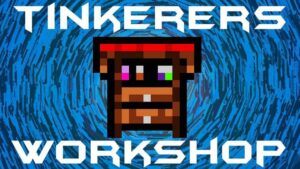Introduction
In gaming and interactive technology, Tinkerer’s Workshop: The Magic Screen That Came Alive has captured the imagination of users worldwide. This innovative concept combines digital artistry, coding, and interactivity, allowing users to create, manipulate, and bring their ideas to life on a virtual screen. But what exactly is this magic screen? How does it work, and why has it become a game-changer in interactive media?
In this article, we will explore the origins, mechanics, and impact of the Magic Screen, answering the most frequently asked questions and diving deep into the evolution of interactive digital experiences. Whether you’re a developer, gamer, or tech enthusiast, this guide will give you insights into one of the most fascinating advancements in digital interactivity.
The Origins of the Magic Screen
The concept of a “magic screen” isn’t entirely new. Early inspirations for interactive digital experiences stem from classic arcade machines, virtual reality experiments, and touchscreen interfaces. However, Tinkerer’s Workshop took the idea to the next level by integrating it into a highly creative, user-friendly platform that allows real-time customization and interactivity.
The project initially started as a prototype designed to help users visualize coding and digital art intuitively. It allowed users to “draw“ elements on the screen and watch them react dynamically. Over time, the idea expanded into a full-fledged interactive ecosystem where users could create and program behaviors, add animations, and even integrate artificial intelligence into their projects.
How the Magic Screen Works
At its core, the Magic Screen operates on a blend of real-time rendering technology and user input recognition. Here’s a breakdown of its key functionalities:
- Touch and Gesture Recognition
- Users can interact with the screen using a stylus, mouse, or touch gestures.
- Multi-touch capabilities allow complex interactions such as scaling, rotating, and transforming objects.
- AI-Assisted Animation
- The system can predict movements and animate objects based on simple user input.
- Pre-built templates help users create complex animations without extensive coding knowledge.
- Dynamic Coding Interface
- Users can write simple scripts to define object behaviors.
- Drag-and-drop functionality enables beginners to build interactive elements quickly.
- Real-Time Collaboration
- Multiple users can work on a project simultaneously.
- Cloud-based storage allows for easy sharing and remote access.
- Augmented Reality (AR) Integration
- Users can extend their creations into real-world environments through AR.
- This feature bridges the gap between digital and physical interaction.
The magic of this screen lies in its ability to merge creativity with technology, allowing users to experience digital design in an entirely new way.
Why the Magic Screen Stands Out
The Magic Screen isn’t just another digital canvas—it’s a transformative experience. Here’s why it stands out in the world of interactive technology:
- Accessibility – Designed for beginners and experts, the interface intuitively offers advanced features for skilled users.
- Educational Value—It is a fantastic learning tool for aspiring digital artists, programmers, and game designers.
- Endless Creativity – Users aren’t limited to drawing; they can animate, simulate physics, and even develop simple games.
- Community-Driven – A thriving community of users shares projects, tutorials, and resources, making it a continuously evolving platform.
These elements have contributed to the Magic Screen’s growing popularity, making it a must-have tool for creatives and developers alike.
FAQs About Tinkerer’s Workshop: The Magic Screen That Came Alive
1. What Makes the Magic Screen Unique Compared to Other Interactive Displays?
The Magic Screen stands out from typical touchscreens and drawing tablets by offering a unique combination of real-time rendering, AI-driven animations, and collaborative features. Users can program behaviors, engage with digital objects, and incorporate augmented reality into their projects, setting them apart from conventional drawing tools.
2. Can Beginners Use the Magic Screen Without Any Prior Coding Knowledge?
Yes! The Magic Screen is designed to be user-friendly. While advanced users can write scripts for more complex interactions, beginners can use drag-and-drop features and pre-built animation templates to bring their ideas to life. Tutorials and community support also help new users get started quickly.
3. What Are Some Popular Applications of the Magic Screen?
The Magic Screen is used in a variety of fields, including:
- Game Development – Creating simple interactive games.
- Digital Art – Bringing drawings to life with animations.
- Education – Teaching coding, design, and interactivity to students.
- Augmented Reality – Extending digital creations into real-world environments.
4. How Does the AI Feature Enhance the Magic Screen Experience?
The Magic Screen utilizes AI-driven features to enhance the design process by predicting and animating user input. For instance, when a user sketches an essential stick figure, the AI can automatically generate smooth walking animations. This functionality simplifies the creation of complex designs and makes the process more intuitive and efficient.
5. Is the Magic Screen Available for Different Devices?
Yes! The Magic Screen is compatible with various platforms, including tablets, PCs, and AR/VR devices. A mobile version is also being developed to enhance accessibility on the go.
The Future of Interactive Digital Design
As technology continues to evolve, so does the potential of interactive platforms like the Magic Screen. Future updates may include:
- Expanded AR and VR Capabilities – Allowing users to experience fully immersive digital environments.
- Machine Learning Enhancements – Improving AI-driven animations and predictive interactions.
- Cross-Platform Synchronization – Seamless project access across different devices.
The combination of creativity and technology shapes the future of interactive media, and Tinkerer’ shop: The Magic Screen That Came Alive is at the forefront of this revolution.
Conclusion
The Magic Screen has redefined digital interaction by providing users with an intuitive, creative, and highly versatile tool. Whether you’re a scientist, coder, educator, or tech enthusiast, it offers endless possibilities for innovation.
As this technology continues to evolve, we can only imagine the future possibilities of digital interactivity. The journey of the Magic Screen has only just begun, and its impact on the creative and technological landscape will continue to grow.


